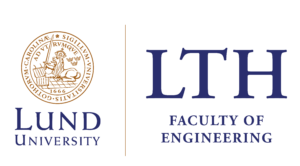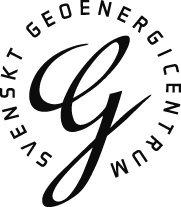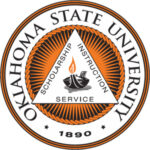Lund University (LU)
Lund University was founded in 1666 and is repeatedly ranked among the world’s top 100 universities. The University has around 44 000 students and more than 8 000 staff based in Lund, Helsingborg, and Malmö. Lund is considered one of the most popular study locations in Sweden. The University offers one of the broadest ranges of programmes and courses in Scandinavia, based on cross-disciplinary and cutting-edge research. The unique disciplinary range encourages boundary-crossing collaborations both within academia and with wider society, creating great conditions for scientific breakthroughs and innovations. The University has a distinct international profile, with partner universities in almost 70 countries.
Lund University is actively involved in the Research and Development of future energy supply and energy storage systems. These include, among others, Photovoltaic/Thermal (PV/T) systems, District Heating and Cooling (DHC) Systems, heat pump systems, Underground Thermal Energy Storage (UTES), systems, and Borehole Thermal Energy Storage (BTES) systems. Lund University is among the leading universities in the world for research on shallow geothermal energy and district heating and cooling systems. Most of the methods used for the sizing and design of ground energy systems in the industry today have originated from Lund University.
Project team members:
Akram Abdul Hamid
Jesper Arfvidsson
Nischal Chaulagain
Johan Claesson
Erik Everbring
Ulla Janson
Dennis Johansson
Lund University
Box 118, 221 00 Lund, SWEDEN
www.lu.se
The Swedish Geoenergy Center (SGC)
The Swedish Geoenergy Center, founded in 2013, is a knowledge center with the main task to gather and disseminate information related to geoenergy, nationally and internationally. SGC is a private legal entity associated with the Swedish drillers’ organisations Borrföretagen. SGC arranges geoenergy related short-courses, seminars and conferences, and collects statistical data related to geoenergy. SGC supports and is engaged in geoenergy related research activities and in national and international work groups. SGC is editor of the magazine Svensk Geoenergi (Swedish Geoenergy) with two issues per year. SGC issues a monthly electronic newsletter covering geoenergy related news and information.
Project team members:
Signhild Gehlin
The Swedish Geoenergy Center/Svenskt Geoenergicentrum
Hedvig Möllers Gata 12, 223 55 Lund, SWEDEN
www.geoenergicentrum.se
VIA University College
VIA carries out research and development projects with significant emphasis on application, product development and market adoption. As such, VIA R&D project consortia often consist of several public and private stakeholders in triple-helix collaborations, operating close to the market. VIA also has experience in mathematical and numerical modelling of geothermal resources including open and closed loop borehole heat exchangers, buried pipes, geoenergy structures and system level modelling of 5GDHC grids. VIA has access to all available operational data from Geo5GDHC grids in Denmark from previous research and development projects and from its wide network of national stakeholders. Moreover, VIA has experience in dissemination in peer review articles and to the general public. VIA is a founding board member in the Danish 5GDHC non-profit association Termonet Danmark, currently with 79 member organizations, that will serve as a platform for disseminating project results and tools, to further advance the market uptake of Geo5GDHC in Denmark. VIA is experienced in both technical and administrative project management and has spearheaded both national and international research projects including full-scale demonstration of Geo5GDHC.
Project team members:
Søren Erbs Poulsen
Karl Woldum Tordrup
Kristoffer Bested Nielsen
Jane Lund Andersen
VIA University College
Hedeager 2, DK-8200 Aarhus N, DENMARK
www.via.dk
Geologic Survey of Denmark and Greenland (GEUS)
The Geological Survey of Denmark and Greenland is an internationally oriented, independent research and advisory institution within the Danish Ministry of Energy, Utilities and Climate stablished in 1888. The main mission of GEUS comprises provision of R&D and advisory services for government agencies, local authorities and private enterprises in Denmark as well as internationally. Key scientific areas include: water resources, subsurface energy storage, raw materials and mineral resources, geological mapping of Denmark and Greenland, marine geology and physical and digital storage of geological data for the Kingdom. Current staff is about 300, with some 200 holding academic degrees. Annual turnover is about DKK 300 million (c. 40 million Euro). GEUS has been lead or contributed to a number of EU co-financed and national RTD projects within climate change, CO2 mitigation, environment and energy and has conducted research pertaining to geothermal energy since the late seventies, including several national evaluations of the deep geothermal potential and contribution to the Atlas of Geothermal resources in Europe. Lately GEUS has performed detailed local evaluations of the geothermal potential for a number of Danish cities and has been leading a national research project on shallow geothermal energy focusing on Ground Source Heat Pumps and Borehole Heat Exchangers as well as participated in the EU IEE project REGEOCITIES aiming to overcome administrative and regulatory barriers against shallow geothermal energy in Europe. Recently GEUS has been leading two national research projects on deep geothermal energy and geological storage of heat, respectively.
Project team members:
Viktor Søgaard Rasmussen
Karen Anthonsen
Bjarni Pjetursson
Florian Smit
Danish Geological Survey (GEUS)
Oester Voldgade 10, 1350 Copenhagen K, DENMARK
www.geus.dk
GeoDrilling ApS
GeoDrilling develops projects with closed loop shallow geothermal boreholes in Denmark and has been directly involved in commissioning eight shallow geothermal grids (thermonets) in Denmark and is also the grid owner and operator in two of the cases. Consequently, GeoDrilling has a broad practical knowledge base regarding closed loop boreholes and construction of thermonets as a special competence. Through participation in a wide variety of commercial and R&D projects over the years, GeoDrilling has knowledge about metering, data collection and storage, web-programming and economic analysis.
Project team members: 
Søren Skjold Andersen
Bjørn Kassøe Andersen
GeoDrilling ApS
Engsøparken 231, 7200 Grindsted, DENMARK
www.geodrilling.dk
SKANSKA Norway AS
Skanska Norway is a leading green developer and construction company in Norway, with more than 4500 employees. Skanska Technology is Skanska Norway’s own special advisor. It has the strongest academic expertise in the construction industry in Norway and consists of approx. 50 people with specialized expertise in terms of energy, environment, building physics, construction, concrete technology, BIM and VDC (Virtual Design and Construction). Skanska Technology acts as an internal advisor within all phases of projects and has features ranging from concept development, marketing and project development to traditional design, follow-up of production and aftermarket. It also leads or participate in 5-7 research projects continuously.
Skanska Technology is a part of Skanska’s strategic initiative as a complete project developer and contractor in complex projects. Skanska Technology’s department for Climate, Energy and Building physics consists of around 20 consultants with expertise in, among other things, certification (BREEAM-NOR, CEEQUAL), energy and indoor climate, building physics and greenhouse gas emissions and materials.
Project team members:
Tor Helge Dokka
Bjørn Jenssen
Robert Hoel Lund
Knut Storaas
Address:
Skanska Norway AS
Lakkegata 53, 0187 Oslo, NORWAY
www.skanska.com
National Renewable Energy Laboratory (NREL)
The National Renewable Energy Laboratory (NREL) is the U.S. Department of Energy’s primary national laboratory for energy systems research and development. With a focus on security and reliability, NREL leads energy systems integration and innovation—enhancing existing technologies and developing new, cutting-edge solutions that unlock economic opportunity and fuel America’s global competitiveness. NREL bridges foundational research with practical applications across fuels, storage, buildings, renewables, and emerging technologies. By fostering strategic partnerships, NREL accelerates energy innovation to market and delivers resilient systems that lower costs, bolster national security, and ensure abundant energy.
Project team members:
Matt Mitchell
Sonja Adams
Saqib Javed
Sarah Abraham
National Renewable Energy Laboratory (NREL)
15013 Denver West Parkway, Golden, CO 80401 USA
www.nrel.gov
Associated partners:
Oklahoma State University (OSU)
Oklahoma State University is a comprehensive public land-grant university with a Carnegie research classification of R1: “Doctoral Universities – Very high research activity.” OSU received over $160 million in grants and contracts in fiscal year 2020. OSU recently ranked 85th out of 1,115 institutions around the world and 8th in the U.S. in the Times Higher Education’s 2021 impact rankings for contributions to the United Nations’ Sustainable Development Goals, with OSU excelling in efforts to end hunger, improve water quality and supply, clean energy, and sustainable cities and communities.
Project team members:
Jeffrey D Spitler
Niranjan Bastakoti
Timothy West
Oklahoma State University
Stillwater, OK 74078, USA
www.go.okstate.edu
Oak Ridge National Laboratory (ORNL)
Oak Ridge National Laboratory is a U.S. multiprogram science and technology national laboratory sponsored by the U.S. Department of Energy (DOE) and administered, managed, and operated by UT–Battelle as a federally funded research and development center (FFRDC) under a contract with the DOE. ORNL delivers scientific discoveries and technical breakthroughs needed to realize solutions in energy and national security and provide economic benefit to the nation. ORNL’s Building Technology Research and Integration Center (BTRIC), established in 1993, is the DOE’s only designated user facility dedicated to performing research and development in building technologies. With the aim of improving the energy efficiency and environmental compatibility of residential and commercial buildings, research focuses on building envelopes, equipment, building systems integration, energy storage and building-to-grid interactions, sensors, transactive controls, and data modeling and simulation. From benchtop wind tunnels to computational fluid dynamics modeling to large-scale environmental chambers, BTRIC provides a range of capabilities to advance building technologies. ORNL has decades of R&D experience on ground source heat pump (GSHP) technologies and collaborated with OSU on the development of an online techno-economic feasibility tool for GSHP systems.
Project team members:
Xiaobing Liu
Jyothis Preem Anand
Oak Ridge National Laboratory (ORNL)
1 Bethel Valley Road, Oak Ridge, TN 37830 USA
www.ornl.gov
